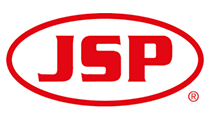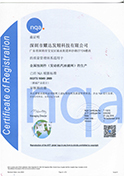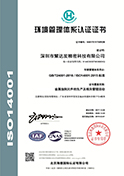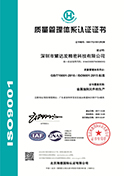
Corrosion process flow
A detailed introduction to the corrosion process flow, providing friends with a detailed understanding of the corrosion processing technology process
The corrosion process of different types of metals varies, but the general steps are as follows: corrosion plate → cleaning and degreasing → water washing → drying → film or screen printing ink → drying → exposure pattern → development → water washing and drying → corrosion → film stripping → drying → inspection → finished product packaging.
1. Cleaning process before corrosion process flow
The processes before stainless steel or other corrosion processes are all cleaning treatments, mainly used to remove dirt, dust, oil stains, etc. from the surface of the material. Whether this process is well completed is the key process to ensure good adhesion between the film or screen printing ink and the metal surface. Therefore, it is necessary to thoroughly remove the oil stains and oxide film on the corroded process surface. The oil removal plan should be determined based on the oil contamination of the workpiece, and it is best to perform electrolytic oil removal before screen printing ink to ensure the effectiveness of oil removal. The best etching solution should also be selected according to the type of metal and the thickness of the oxide film to ensure a clean surface. Before screen printing, it needs to be dried. If there is moisture, it will also affect the adhesion of the ink, and even affect the effect of subsequent pattern etching, even causing distortion and affecting the etching effect.
when applying the photosensitive adhesive layer, factors such as the etching processing time required for the product''s graphics should be considered in order to produce a thicker or thinner photosensitive adhesive layer, so as to achieve good coverage performance and high clarity of the images processed by the corrosion process.
3. Drying
After applying film or rolling screen printing ink, it is necessary to thoroughly dry the photosensitive adhesive layer to prepare for the exposure process. At the same time, it is necessary to ensure that the surface is clean, free of adhesion, impurities, etc.
4. Exposure
This process is an important step in the corrosion process, and the amount of exposure energy will be considered based on the thickness and precision of the product material. This is also a reflection of the technical capability of an etching processing enterprise. The exposure process determines whether etching can ensure good dimensional control accuracy and other requirements.
5. Development
After the photosensitive adhesive layer on the surface of the corrosion process board is exposed, the graphic adhesive layer is cured on the metal plate after being illuminated. Afterwards, the unnecessary parts of the graphic that need to be corroded should be exposed. The development process also determines whether the final size of the product can meet the requirements. This process will completely remove the unnecessary photosensitive adhesive layer covering the product.
6. Corrosion process
The most critical process is after the pre production process of the product is completed. Will undergo corrosion with chemical solutions. This process determines the key process of whether the final product is qualified. The entire process involves parameters such as the concentration, temperature, pressure, and speed of the corrosive solution, which collectively determine the quality of the product.
7. Film stripping
After the corrosion process, the surface of the product is still covered with a layer of photosensitive adhesive layer. This process requires removing the photosensitive adhesive layer on the surface of the product after corrosion processing. Due to the acidic nature of the photosensitive adhesive layer, the vast majority of them use acid-base neutralization method for swelling, overflow water washing and ultrasonic cleaning to remove the surface photosensitive adhesive layer. This process mainly prevents the residue of photosensitive adhesive.
After the film is removed, the remaining tasks are inspection and packaging. The size inspection ensures that no defective products are released into the hands of customers.
Richard.Liu/刘家成
Next:What factors make up the control accuracy of metal etchingPrevious:引线框架的蚀刻
relevant information
- 2018-12-03Common faults and troubleshooting methods of stainless steel etching technology
- 2018-10-26Expansion coefficient of etched stainless steel material
- 2018-10-18What are the conditions for selecting etching processing?
- 2018-10-12Frequently Asked Etching Questions and Answers
- 2018-09-29How to drill a 0.2 hole
- 2018-09-13What factors make up the control accuracy of metal etching
- 2018-08-25Corrosion process flow
- 2018-08-21Where can I find stainless steel micro hole processing?
- 2018-08-09引线框架的蚀刻



















